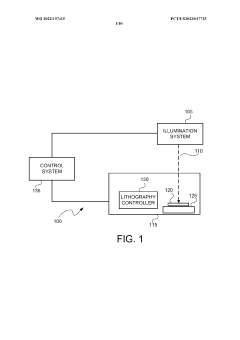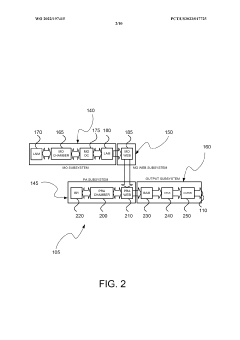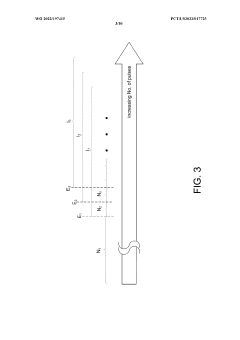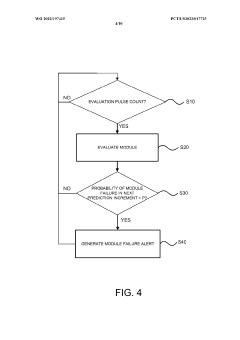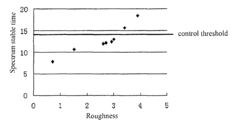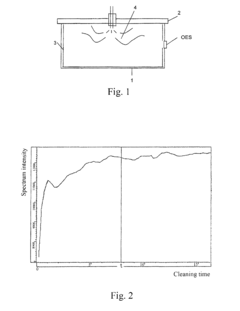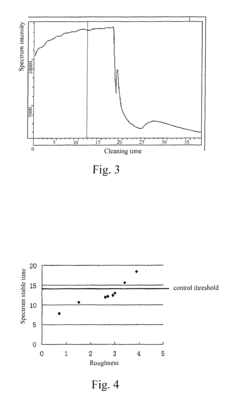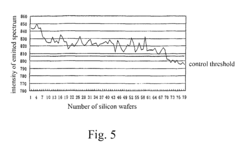Exploring predictive maintenance systems using silicon photonics.
JUL 17, 20259 MIN READ
Generate Your Research Report Instantly with AI Agent
Patsnap Eureka helps you evaluate technical feasibility & market potential.
Silicon Photonics in Predictive Maintenance: Background and Objectives
Silicon photonics has emerged as a transformative technology in the field of integrated optics, offering unprecedented capabilities for high-speed data transmission and processing. In recent years, its potential applications have expanded beyond traditional telecommunications and data centers, venturing into diverse domains such as sensing and predictive maintenance systems. This technological evolution presents a unique opportunity to revolutionize the way industrial equipment is monitored and maintained.
The development of silicon photonics can be traced back to the late 1980s, with significant advancements occurring in the past two decades. The technology leverages the well-established semiconductor manufacturing processes, allowing for the integration of optical components on a silicon chip. This integration enables the creation of compact, energy-efficient, and cost-effective photonic devices that can operate at high speeds and with low latency.
In the context of predictive maintenance, silicon photonics offers several compelling advantages. The technology's ability to manipulate light at the microscale allows for the development of highly sensitive sensors capable of detecting minute changes in temperature, pressure, vibration, and other critical parameters. These sensors can be integrated directly into industrial machinery, providing real-time data on equipment health and performance.
The primary objective of exploring predictive maintenance systems using silicon photonics is to enhance the reliability and efficiency of industrial operations. By leveraging the unique properties of silicon photonics, researchers and engineers aim to develop advanced monitoring systems that can predict equipment failures before they occur, thereby reducing downtime, maintenance costs, and improving overall operational efficiency.
Another key goal is to overcome the limitations of traditional electronic sensors in harsh industrial environments. Silicon photonic sensors are inherently immune to electromagnetic interference and can operate in high-temperature and high-pressure conditions, making them ideal for use in challenging industrial settings such as power plants, oil refineries, and manufacturing facilities.
Furthermore, the integration of silicon photonics with artificial intelligence and machine learning algorithms presents an opportunity to create intelligent predictive maintenance systems. These systems can analyze vast amounts of sensor data in real-time, identifying patterns and anomalies that may indicate impending equipment failure. This proactive approach to maintenance has the potential to significantly extend the lifespan of industrial assets and optimize their performance.
As we explore the application of silicon photonics in predictive maintenance, it is essential to consider the broader technological landscape and market trends. The growing emphasis on Industry 4.0 and the Industrial Internet of Things (IIoT) aligns perfectly with the capabilities offered by silicon photonic sensors and systems. This synergy is expected to drive further innovation and adoption of silicon photonics-based predictive maintenance solutions across various industrial sectors.
The development of silicon photonics can be traced back to the late 1980s, with significant advancements occurring in the past two decades. The technology leverages the well-established semiconductor manufacturing processes, allowing for the integration of optical components on a silicon chip. This integration enables the creation of compact, energy-efficient, and cost-effective photonic devices that can operate at high speeds and with low latency.
In the context of predictive maintenance, silicon photonics offers several compelling advantages. The technology's ability to manipulate light at the microscale allows for the development of highly sensitive sensors capable of detecting minute changes in temperature, pressure, vibration, and other critical parameters. These sensors can be integrated directly into industrial machinery, providing real-time data on equipment health and performance.
The primary objective of exploring predictive maintenance systems using silicon photonics is to enhance the reliability and efficiency of industrial operations. By leveraging the unique properties of silicon photonics, researchers and engineers aim to develop advanced monitoring systems that can predict equipment failures before they occur, thereby reducing downtime, maintenance costs, and improving overall operational efficiency.
Another key goal is to overcome the limitations of traditional electronic sensors in harsh industrial environments. Silicon photonic sensors are inherently immune to electromagnetic interference and can operate in high-temperature and high-pressure conditions, making them ideal for use in challenging industrial settings such as power plants, oil refineries, and manufacturing facilities.
Furthermore, the integration of silicon photonics with artificial intelligence and machine learning algorithms presents an opportunity to create intelligent predictive maintenance systems. These systems can analyze vast amounts of sensor data in real-time, identifying patterns and anomalies that may indicate impending equipment failure. This proactive approach to maintenance has the potential to significantly extend the lifespan of industrial assets and optimize their performance.
As we explore the application of silicon photonics in predictive maintenance, it is essential to consider the broader technological landscape and market trends. The growing emphasis on Industry 4.0 and the Industrial Internet of Things (IIoT) aligns perfectly with the capabilities offered by silicon photonic sensors and systems. This synergy is expected to drive further innovation and adoption of silicon photonics-based predictive maintenance solutions across various industrial sectors.
Market Analysis for Predictive Maintenance Solutions
The predictive maintenance solutions market is experiencing significant growth, driven by the increasing adoption of Industry 4.0 technologies and the growing need for efficient asset management across various industries. The global market for predictive maintenance solutions is expected to expand rapidly in the coming years, with a compound annual growth rate (CAGR) projected to be in the double digits through 2025.
Key factors contributing to this market growth include the rising demand for reducing operational costs, minimizing equipment downtime, and improving overall productivity in manufacturing, energy, transportation, and other sectors. The integration of advanced technologies such as artificial intelligence, machine learning, and Internet of Things (IoT) into predictive maintenance systems has further accelerated market expansion.
The industrial sector remains the largest end-user segment for predictive maintenance solutions, with manufacturing companies increasingly implementing these systems to optimize their production processes and extend the lifespan of critical equipment. The energy and utilities sector is also a significant adopter, utilizing predictive maintenance to enhance the reliability of power generation and distribution infrastructure.
Geographically, North America currently holds the largest market share, owing to the presence of major technology providers and early adoption of advanced maintenance strategies. However, the Asia-Pacific region is expected to witness the fastest growth rate in the coming years, driven by rapid industrialization and increasing investments in smart manufacturing initiatives.
The market landscape is characterized by a mix of established players and innovative startups. Major technology companies are expanding their offerings in this space through acquisitions and partnerships, while specialized predictive maintenance solution providers are focusing on niche applications and industry-specific expertise.
Emerging trends in the predictive maintenance market include the integration of edge computing for real-time data processing, the use of digital twins for more accurate equipment modeling, and the development of cloud-based platforms for scalable and flexible deployment options. These advancements are expected to further enhance the capabilities and accessibility of predictive maintenance solutions across various industries.
As the technology continues to evolve, there is growing interest in exploring novel approaches to predictive maintenance, such as the use of silicon photonics. This emerging field offers potential benefits in terms of improved sensor performance, reduced power consumption, and enhanced data transmission capabilities, which could significantly impact the future development of predictive maintenance systems.
Key factors contributing to this market growth include the rising demand for reducing operational costs, minimizing equipment downtime, and improving overall productivity in manufacturing, energy, transportation, and other sectors. The integration of advanced technologies such as artificial intelligence, machine learning, and Internet of Things (IoT) into predictive maintenance systems has further accelerated market expansion.
The industrial sector remains the largest end-user segment for predictive maintenance solutions, with manufacturing companies increasingly implementing these systems to optimize their production processes and extend the lifespan of critical equipment. The energy and utilities sector is also a significant adopter, utilizing predictive maintenance to enhance the reliability of power generation and distribution infrastructure.
Geographically, North America currently holds the largest market share, owing to the presence of major technology providers and early adoption of advanced maintenance strategies. However, the Asia-Pacific region is expected to witness the fastest growth rate in the coming years, driven by rapid industrialization and increasing investments in smart manufacturing initiatives.
The market landscape is characterized by a mix of established players and innovative startups. Major technology companies are expanding their offerings in this space through acquisitions and partnerships, while specialized predictive maintenance solution providers are focusing on niche applications and industry-specific expertise.
Emerging trends in the predictive maintenance market include the integration of edge computing for real-time data processing, the use of digital twins for more accurate equipment modeling, and the development of cloud-based platforms for scalable and flexible deployment options. These advancements are expected to further enhance the capabilities and accessibility of predictive maintenance solutions across various industries.
As the technology continues to evolve, there is growing interest in exploring novel approaches to predictive maintenance, such as the use of silicon photonics. This emerging field offers potential benefits in terms of improved sensor performance, reduced power consumption, and enhanced data transmission capabilities, which could significantly impact the future development of predictive maintenance systems.
Current Challenges in Silicon Photonics-based Maintenance Systems
Silicon photonics-based predictive maintenance systems face several significant challenges that hinder their widespread adoption and effectiveness. One of the primary obstacles is the integration of silicon photonic components with existing maintenance infrastructure. Many industrial systems are not designed to accommodate advanced optical sensing technologies, making retrofitting a complex and costly process.
The sensitivity of silicon photonic devices to environmental factors poses another challenge. Temperature fluctuations, vibrations, and electromagnetic interference can affect the accuracy and reliability of measurements. Developing robust packaging and isolation techniques to protect these sensitive components in harsh industrial environments is crucial for ensuring consistent performance.
Data interpretation and analysis present a substantial hurdle in silicon photonics-based maintenance systems. The vast amount of data generated by these high-resolution sensors requires sophisticated algorithms and processing capabilities to extract meaningful insights. Developing efficient data processing techniques that can handle real-time analysis of complex photonic signals remains an ongoing challenge.
The cost of implementing silicon photonics-based maintenance systems is another significant barrier. While the technology offers superior performance in many aspects, the initial investment required for equipment, installation, and training can be prohibitive for many organizations, particularly small and medium-sized enterprises.
Standardization and interoperability issues also impede the widespread adoption of silicon photonics in predictive maintenance. The lack of universal standards for silicon photonic components and interfaces makes it difficult to integrate solutions from different vendors or to ensure compatibility with existing systems.
The limited availability of skilled personnel trained in both silicon photonics and predictive maintenance techniques presents a workforce challenge. This shortage of expertise can lead to difficulties in system design, implementation, and ongoing maintenance, potentially reducing the effectiveness of these advanced systems.
Lastly, the reliability and longevity of silicon photonic components in industrial settings remain concerns. While silicon photonics offers many advantages, the long-term performance and durability of these components under continuous operation in harsh environments are still being evaluated. Addressing these reliability issues is crucial for building confidence in the technology and ensuring its viability for predictive maintenance applications.
The sensitivity of silicon photonic devices to environmental factors poses another challenge. Temperature fluctuations, vibrations, and electromagnetic interference can affect the accuracy and reliability of measurements. Developing robust packaging and isolation techniques to protect these sensitive components in harsh industrial environments is crucial for ensuring consistent performance.
Data interpretation and analysis present a substantial hurdle in silicon photonics-based maintenance systems. The vast amount of data generated by these high-resolution sensors requires sophisticated algorithms and processing capabilities to extract meaningful insights. Developing efficient data processing techniques that can handle real-time analysis of complex photonic signals remains an ongoing challenge.
The cost of implementing silicon photonics-based maintenance systems is another significant barrier. While the technology offers superior performance in many aspects, the initial investment required for equipment, installation, and training can be prohibitive for many organizations, particularly small and medium-sized enterprises.
Standardization and interoperability issues also impede the widespread adoption of silicon photonics in predictive maintenance. The lack of universal standards for silicon photonic components and interfaces makes it difficult to integrate solutions from different vendors or to ensure compatibility with existing systems.
The limited availability of skilled personnel trained in both silicon photonics and predictive maintenance techniques presents a workforce challenge. This shortage of expertise can lead to difficulties in system design, implementation, and ongoing maintenance, potentially reducing the effectiveness of these advanced systems.
Lastly, the reliability and longevity of silicon photonic components in industrial settings remain concerns. While silicon photonics offers many advantages, the long-term performance and durability of these components under continuous operation in harsh environments are still being evaluated. Addressing these reliability issues is crucial for building confidence in the technology and ensuring its viability for predictive maintenance applications.
Existing Silicon Photonics Solutions for Predictive Maintenance
01 Data-driven predictive maintenance systems
These systems utilize advanced data analytics and machine learning algorithms to predict equipment failures and optimize maintenance schedules. By analyzing historical and real-time data from sensors and other sources, these systems can identify patterns and anomalies that indicate potential issues, allowing for proactive maintenance interventions.- Data-driven predictive maintenance systems: These systems utilize advanced data analytics and machine learning algorithms to predict equipment failures and optimize maintenance schedules. By analyzing historical and real-time data from sensors and other sources, these systems can identify patterns and anomalies that indicate potential issues, allowing for proactive maintenance interventions.
- IoT-enabled predictive maintenance: Internet of Things (IoT) technology is integrated into predictive maintenance systems to collect and transmit real-time data from equipment and assets. This enables continuous monitoring of machine health, performance metrics, and environmental conditions, facilitating more accurate predictions and timely maintenance actions.
- AI-powered predictive maintenance solutions: Artificial Intelligence (AI) and deep learning techniques are employed to enhance the accuracy and effectiveness of predictive maintenance systems. These AI-powered solutions can process complex, multi-dimensional data sets to identify subtle indicators of potential failures and provide more precise maintenance recommendations.
- Cloud-based predictive maintenance platforms: Cloud computing technologies are leveraged to create scalable and flexible predictive maintenance platforms. These systems allow for centralized data storage, processing, and analysis, enabling remote monitoring and management of maintenance activities across multiple locations or facilities.
- Industry-specific predictive maintenance applications: Tailored predictive maintenance solutions are developed for specific industries such as manufacturing, healthcare, transportation, and energy. These applications address unique challenges and requirements of each sector, incorporating industry-specific knowledge and best practices to optimize maintenance strategies and improve overall equipment effectiveness.
02 IoT-enabled predictive maintenance
Internet of Things (IoT) technology is integrated into predictive maintenance systems to enable real-time monitoring and data collection from connected devices and equipment. This approach allows for continuous assessment of asset health, performance tracking, and early detection of potential failures, leading to improved maintenance efficiency and reduced downtime.Expand Specific Solutions03 AI-powered predictive maintenance solutions
Artificial Intelligence (AI) is employed in predictive maintenance systems to enhance decision-making processes and automate maintenance planning. AI algorithms can analyze complex data sets, identify correlations, and generate accurate predictions for equipment failures, enabling more precise and cost-effective maintenance strategies.Expand Specific Solutions04 Cloud-based predictive maintenance platforms
Cloud computing technologies are utilized to develop scalable and accessible predictive maintenance platforms. These systems offer centralized data storage, processing capabilities, and remote access to maintenance insights, facilitating collaboration among maintenance teams and enabling real-time decision-making across multiple locations.Expand Specific Solutions05 Industry-specific predictive maintenance applications
Tailored predictive maintenance solutions are developed for specific industries such as manufacturing, healthcare, and transportation. These applications address unique maintenance challenges and requirements of different sectors, incorporating industry-specific knowledge and best practices to optimize asset performance and reliability.Expand Specific Solutions
Key Players in Silicon Photonics and Predictive Maintenance
The predictive maintenance systems using silicon photonics market is in its early growth stage, with significant potential for expansion. The global market size is projected to increase rapidly due to the rising demand for efficient maintenance solutions across various industries. The technology's maturity is advancing, with key players like Applied Materials, IBM, and Siemens driving innovation. These companies are leveraging their expertise in semiconductor manufacturing, data analytics, and industrial automation to develop cutting-edge silicon photonics-based predictive maintenance systems. Emerging players such as Lam Research and NAURA Microelectronics are also contributing to the field's development, focusing on specialized applications and regional markets. As the technology matures, we can expect increased adoption across diverse sectors, leading to a more competitive and dynamic market landscape.
International Business Machines Corp.
Technical Solution: IBM's approach to predictive maintenance using silicon photonics focuses on integrating optical components directly onto silicon chips. This technology enables high-speed, low-latency data transmission and processing, crucial for real-time monitoring and analysis in industrial settings. IBM's silicon photonics-based systems can detect minute changes in equipment performance, predicting potential failures before they occur. The company has demonstrated a 100Gb/s transceiver using silicon photonics [1], which can be applied to create dense sensor networks for comprehensive equipment monitoring. IBM's predictive maintenance solution leverages machine learning algorithms that analyze data from these high-speed optical sensors, providing actionable insights to maintenance teams.
Strengths: High-speed data processing, integration with existing silicon-based systems, and scalability. Weaknesses: High initial implementation costs and potential complexity in retrofitting existing equipment.
Siemens Corp.
Technical Solution: Siemens' predictive maintenance system utilizing silicon photonics combines advanced sensor technology with AI-driven analytics. Their approach integrates silicon photonics-based sensors into industrial equipment, enabling high-resolution, real-time monitoring of critical parameters such as temperature, vibration, and stress. These sensors leverage the principles of optical interferometry, allowing for extremely precise measurements [2]. Siemens' system processes this data using edge computing devices equipped with specialized AI algorithms, capable of detecting subtle changes in equipment behavior that may indicate impending failures. The company has reported up to 30% reduction in maintenance costs and 70% decrease in unplanned downtime for clients using this technology [3]. Siemens also emphasizes the system's ability to operate in harsh industrial environments, thanks to the inherent resilience of optical components to electromagnetic interference.
Strengths: High precision measurements, resilience to industrial environments, and significant reduction in maintenance costs. Weaknesses: Potential high initial investment and need for specialized expertise in silicon photonics for installation and maintenance.
Core Innovations in Silicon Photonics for Maintenance Prediction
Maintenance of modules for light sources used in semiconductor photolithography
PatentWO2022197415A1
Innovation
- A predictive maintenance approach using machine learning models to evaluate module health at specific pulse milestones, providing binary predictions on module failure likelihood, and generating alerts for timely maintenance, allowing for data-driven decision-making aligned with user-specific priorities.
Method of online predicting maintenance of an apparatus
PatentActiveUS8154721B2
Innovation
- A method utilizing an optical emission spectrometer (OES) mounted on the apparatus to detect and analyze the intensity of spectra emitted during the dry clean process, allowing for the quantification of process parameters and prediction of maintenance needs without additional components or changes to the apparatus.
Integration Challenges and Opportunities
The integration of silicon photonics into predictive maintenance systems presents both significant challenges and exciting opportunities. One of the primary challenges lies in the seamless integration of photonic components with existing electronic systems. This requires careful consideration of interface design, signal conversion, and data processing to ensure optimal performance and reliability.
Another critical challenge is the miniaturization of photonic components to fit within the space constraints of industrial equipment. While silicon photonics offers advantages in terms of size reduction compared to traditional optical systems, further miniaturization is necessary to enable widespread adoption in various industrial applications. This involves addressing issues related to thermal management, power consumption, and mechanical stability.
The development of robust packaging solutions for silicon photonic devices in harsh industrial environments poses another significant challenge. Predictive maintenance systems often operate in conditions with extreme temperatures, vibrations, and electromagnetic interference. Ensuring the long-term reliability and performance of photonic components under these conditions requires innovative packaging techniques and materials.
Despite these challenges, the integration of silicon photonics in predictive maintenance systems offers numerous opportunities. One key advantage is the potential for high-speed, real-time data acquisition and processing. The ability to transmit and analyze large volumes of data at unprecedented speeds can significantly enhance the accuracy and responsiveness of predictive maintenance algorithms.
Furthermore, the integration of silicon photonics enables the development of compact, multi-functional sensors capable of simultaneously measuring multiple parameters. This can lead to more comprehensive and precise monitoring of equipment health, reducing false alarms and improving overall maintenance efficiency.
The scalability of silicon photonics manufacturing processes presents an opportunity for cost-effective mass production of integrated photonic-electronic systems. As the technology matures and production volumes increase, the cost per unit is expected to decrease, making advanced predictive maintenance solutions more accessible to a wider range of industries.
Lastly, the integration of silicon photonics opens up possibilities for novel sensing modalities and data analysis techniques. For example, the use of on-chip spectroscopy or interferometry could enable the detection of subtle changes in material properties or equipment performance that were previously difficult to measure. This could lead to the development of more sophisticated and accurate predictive maintenance models, ultimately improving equipment reliability and reducing downtime across various industrial sectors.
Another critical challenge is the miniaturization of photonic components to fit within the space constraints of industrial equipment. While silicon photonics offers advantages in terms of size reduction compared to traditional optical systems, further miniaturization is necessary to enable widespread adoption in various industrial applications. This involves addressing issues related to thermal management, power consumption, and mechanical stability.
The development of robust packaging solutions for silicon photonic devices in harsh industrial environments poses another significant challenge. Predictive maintenance systems often operate in conditions with extreme temperatures, vibrations, and electromagnetic interference. Ensuring the long-term reliability and performance of photonic components under these conditions requires innovative packaging techniques and materials.
Despite these challenges, the integration of silicon photonics in predictive maintenance systems offers numerous opportunities. One key advantage is the potential for high-speed, real-time data acquisition and processing. The ability to transmit and analyze large volumes of data at unprecedented speeds can significantly enhance the accuracy and responsiveness of predictive maintenance algorithms.
Furthermore, the integration of silicon photonics enables the development of compact, multi-functional sensors capable of simultaneously measuring multiple parameters. This can lead to more comprehensive and precise monitoring of equipment health, reducing false alarms and improving overall maintenance efficiency.
The scalability of silicon photonics manufacturing processes presents an opportunity for cost-effective mass production of integrated photonic-electronic systems. As the technology matures and production volumes increase, the cost per unit is expected to decrease, making advanced predictive maintenance solutions more accessible to a wider range of industries.
Lastly, the integration of silicon photonics opens up possibilities for novel sensing modalities and data analysis techniques. For example, the use of on-chip spectroscopy or interferometry could enable the detection of subtle changes in material properties or equipment performance that were previously difficult to measure. This could lead to the development of more sophisticated and accurate predictive maintenance models, ultimately improving equipment reliability and reducing downtime across various industrial sectors.
Environmental Impact and Sustainability Considerations
The integration of silicon photonics in predictive maintenance systems presents significant environmental and sustainability considerations. This technology offers potential benefits in terms of energy efficiency and resource conservation, while also raising concerns about its lifecycle impact and material usage.
Silicon photonics-based predictive maintenance systems can contribute to improved energy efficiency in industrial operations. By enabling more accurate and timely predictions of equipment failures, these systems help reduce unnecessary downtime and optimize maintenance schedules. This leads to decreased energy consumption associated with equipment startup and shutdown cycles, as well as reduced waste from premature component replacements.
The miniaturization capabilities of silicon photonics allow for the development of compact, low-power sensors and monitoring devices. These devices consume less energy compared to traditional electronic systems, contributing to overall energy savings in industrial environments. Additionally, the long-range sensing capabilities of photonic systems can reduce the need for extensive wiring and infrastructure, further minimizing material usage and installation costs.
However, the production of silicon photonics components involves energy-intensive processes and the use of specialized materials. The manufacturing of high-purity silicon wafers and the fabrication of photonic integrated circuits require significant energy inputs and may involve the use of rare earth elements or other critical materials. This raises concerns about the sustainability of the supply chain and the potential environmental impact of increased demand for these resources.
The durability and lifespan of silicon photonics components in harsh industrial environments also warrant consideration. While these components are generally robust, their long-term performance and reliability in extreme conditions may affect the overall sustainability of predictive maintenance systems. Ensuring the longevity of these components is crucial to minimize electronic waste and reduce the frequency of replacements.
Recycling and end-of-life management of silicon photonics devices present both challenges and opportunities. The complex integration of optical and electronic components may complicate recycling processes, requiring the development of specialized recycling techniques. However, the high value of materials used in these devices, such as silicon and rare earth elements, provides an incentive for effective recycling and material recovery programs.
As the adoption of silicon photonics in predictive maintenance systems grows, it is essential to conduct comprehensive lifecycle assessments to fully understand and mitigate their environmental impact. This includes evaluating the energy and resource requirements during production, the efficiency gains during operation, and the potential for recycling and reuse at end-of-life. Such assessments will guide the development of more sustainable manufacturing processes and design practices for silicon photonics technologies.
Silicon photonics-based predictive maintenance systems can contribute to improved energy efficiency in industrial operations. By enabling more accurate and timely predictions of equipment failures, these systems help reduce unnecessary downtime and optimize maintenance schedules. This leads to decreased energy consumption associated with equipment startup and shutdown cycles, as well as reduced waste from premature component replacements.
The miniaturization capabilities of silicon photonics allow for the development of compact, low-power sensors and monitoring devices. These devices consume less energy compared to traditional electronic systems, contributing to overall energy savings in industrial environments. Additionally, the long-range sensing capabilities of photonic systems can reduce the need for extensive wiring and infrastructure, further minimizing material usage and installation costs.
However, the production of silicon photonics components involves energy-intensive processes and the use of specialized materials. The manufacturing of high-purity silicon wafers and the fabrication of photonic integrated circuits require significant energy inputs and may involve the use of rare earth elements or other critical materials. This raises concerns about the sustainability of the supply chain and the potential environmental impact of increased demand for these resources.
The durability and lifespan of silicon photonics components in harsh industrial environments also warrant consideration. While these components are generally robust, their long-term performance and reliability in extreme conditions may affect the overall sustainability of predictive maintenance systems. Ensuring the longevity of these components is crucial to minimize electronic waste and reduce the frequency of replacements.
Recycling and end-of-life management of silicon photonics devices present both challenges and opportunities. The complex integration of optical and electronic components may complicate recycling processes, requiring the development of specialized recycling techniques. However, the high value of materials used in these devices, such as silicon and rare earth elements, provides an incentive for effective recycling and material recovery programs.
As the adoption of silicon photonics in predictive maintenance systems grows, it is essential to conduct comprehensive lifecycle assessments to fully understand and mitigate their environmental impact. This includes evaluating the energy and resource requirements during production, the efficiency gains during operation, and the potential for recycling and reuse at end-of-life. Such assessments will guide the development of more sustainable manufacturing processes and design practices for silicon photonics technologies.
Unlock deeper insights with Patsnap Eureka Quick Research — get a full tech report to explore trends and direct your research. Try now!
Generate Your Research Report Instantly with AI Agent
Supercharge your innovation with Patsnap Eureka AI Agent Platform!
